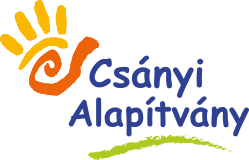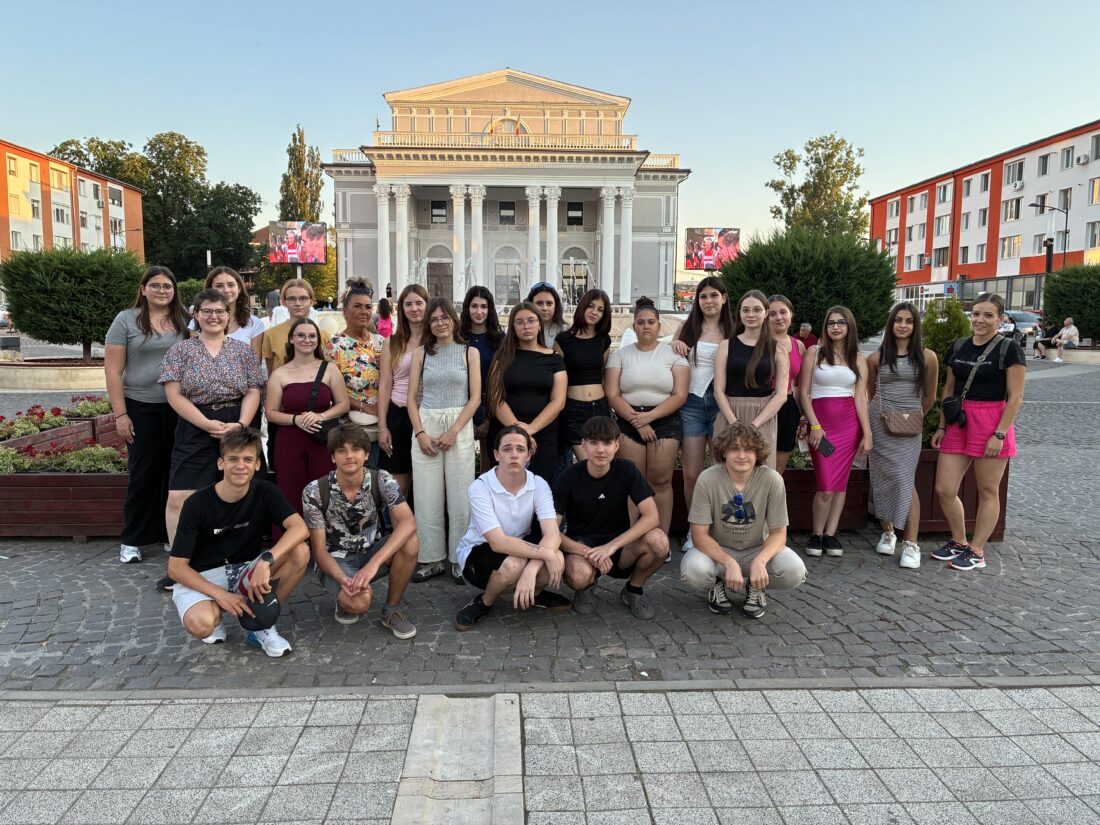
Historical and local history camp
Today, the youth from Jászberény and Szeged set off on an exciting adventure: the two groups departed for a camp in Transylvania to explore its landmarks and gain insight into its history. After crossing the border, our first stop was Arad, where we were joined by our tour guide, István Magyari Vass. We visited the Liberty Statue of Arad, learning about its history — how it was removed after World War I and later reinstalled.
In the evening, we headed to Vajdahunyad Castle for a sunset walk. Although the castle is currently under reconstruction and we could only walk around the outside, the illuminated view and the atmosphere were absolutely magical.
We have many exciting programs ahead this week, including visits to the Roman Catholic Cathedral, Segesvár, the Red Lake and Bicaz Gorge, kürtőskalács (chimney cake) making and cheese tasting, the Turda Gorge, and various cultural programs like traditional dance learning.
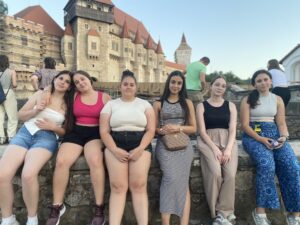
Our morning began with a 7 AM wake-up call followed by breakfast. After packing our suitcases, we headed to our first stop: the Castle of Déva, located along the Mureș River. We learned about the ballad of “Kőmíves Kelemen,” which tells the (fictional) story of how the castle was built. A bit of hiking was required, but the real challenge came from the many stairs. Still, the group conquered it together, and everyone made it to the top, where a stunning view awaited us — of course, we captured it with lots of photos.
After a short break, we traveled to Alba Iulia (Gyulafehérvár), where we explored two significant churches. One, known as the Hungarian church, was built nearly a thousand years ago and now only one of its towers remains. The second, the Orthodox cathedral built by the Romanians, was constructed from the ruins of the old fortress. For a long time, there was rivalry over which was “better,” often judged by the height of the towers.
Our last stop of the day was Segesvár, where we walked through the city center and learned about Sándor Petőfi and Vlad Țepeș (Dracula). We also had some free time to explore on our own. In the evening, we arrived at our accommodation, where we were warmly welcomed with a delicious dinner. After settling in, everyone rested up for the next day’s adventures.
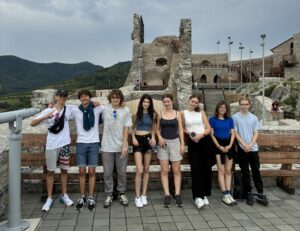
Today we explored some of the most beautiful places in Transylvania. First, we visited a cheese-making workshop in Gheorgheni, where we learned how yogurt and cheese are made from real cow’s milk. We also tasted three types of cheese — the yogurt was especially delicious, rich with the taste of fresh milk. It was great to see the dedication locals put into producing high-quality products.
Next, we went to the Red Lake (Lacul Roșu). Some of us hiked to a lookout point despite the muddy path caused by rain — the view was absolutely worth it. The lake’s unique scenery and the mountains behind it were breathtaking. Later, we continued to the Bicaz Gorge, where the winding road between mountains and the surrounding nature left an unforgettable impression. We even crossed a suspension bridge — an exciting moment with stunning views.
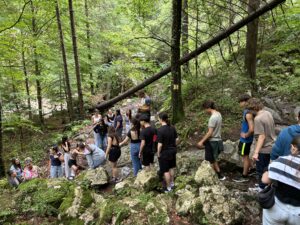
After an 8 AM wake-up, we began our cultural heritage day in Székely Land. Our first stop was Szejkefürdő, where we tasted refreshing sulfuric mineral water, then visited the Mini Transylvania Park. This park displays over 90 scale models representing the region’s history and architectural wonders.
After a short break, we traveled to Korond, where we learned how to make kürtőskalács (chimney cake) and its history. After enjoying our own homemade lunch, we browsed a bazaar filled with traditional ceramics. Though we couldn’t walk around the Bear Lake due to bad weather, our guide, István, showed us the nearby salt rocks instead.
Our final stop was Farkaslaka, where we paid tribute to Áron Tamási and learned about his life. Everyone returned to the accommodation tired, but fulfilled by another rich and eventful day.
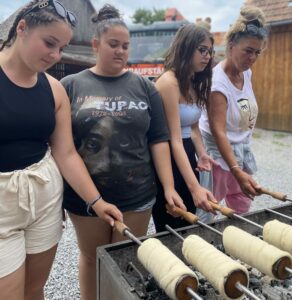
Our first stop today was Székelyvarság. After the bus ride, we hopped onto a tractor-pulled cart and traveled deeper into the village. We hiked to the Csorgókő Waterfall and a nearby spring. Before heading to the lookout point, we took a break and learned the art of making wooden shingles. From the lookout, we could see much of the surrounding region — our guide, István, even joked that those with sharp eyes could spot Kápolnásfalu, where our accommodation was (though we couldn’t see it ourselves).
We then returned to the bus and traveled to Székelyudvarhely. After lunch, we took a city tour. One of the stops was the Park of Remembrance, which features busts of people who have contributed to Transylvania’s legacy. The program ended in the courtyard of a local school, where our guide shared that education has been taking place there for over 400 years.
Our last day started early. Our first stop was the Turda Salt Mine, where we learned fascinating details about how the mine was used and operated throughout history, as well as the basic chemical properties of salt. Afterwards, our guide led us on a walk through the Turda Gorge — a light trail that still took us through stunning landscapes. The trail crossed five suspension bridges, adding some excitement to the hike. In the early afternoon, we headed to our final camp location: Kalotaszentkirály. After unpacking, we were treated to a traditional farewell dinner with live music — a perfect way to say goodbye to Romania. We leave behind an incredibly rich and memorable week — and now, a good rest awaits us all.
